Analyzing Boat Maintenance Data Isn’t Rocket Science… Or Is It?
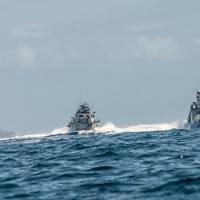
Navy Expeditionary Combat Command (NECC) operates hundreds of boats all the way from a 7-meter Rigid-Hulled Inflatable Boat (RHIB) to a 78-foot patrol boat, as well as construction equipment such as cranes, bulldozers, pumps, cranes, vehicles and chain saws and Explosive Ordinance Disposal (EOD) equipment.Maintaining all of it comes under the watchful eye of Force Maintenance Director Dave Noel.“I’m the guy that fixes the equipment we buy,” Noel said. “Once it’s fielded, it’s our job to keep it operational…
Greensea Receives US Navy Award
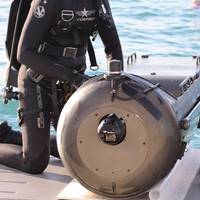
Greensea's open architecture technology on Remotely Operated Vehicles furthered by Small Business Innovation Research Phase II grantGreensea Systems, Inc. creator of OPENSEA, an open architecture robotics platform for the marine industry, won a Phase II Small Business Innovation Research (SBIR) ASAP grant totaling $1,100,000, with option for additional funding, for the continued development of Standoff Command and Control of Remotely Operated Vehicles (ROVs). This project has been funded in whole or in part with Federal funds from the Naval Air Warfare Center Aircraft Division…
US Navy Helps Small Companies Engage with Experimentation

The United States' Department of Navy (DoN) Small Business Innovation Research (SBIR) Experimentation Cell (DoN SEC) connects SBIR innovators with the DoN experimentation community to deliver innovative solutions for the warfighter.“Our mission is to support the SBIR community from the first idea to experiment execution by offering beginning-to-end facilitation, mentoring, and training in all aspects of experimentation,” said Scott Bartlett, the DoN SEC program manager,Naval experimentation can validate or inform concepts of operations…
NUWC Joins 401 Tech Bridge Project
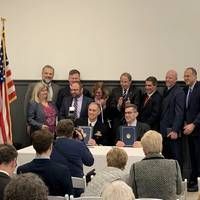
The Naval Undersea Warfare Center (NUWC) Division Newport has joined the 401 Tech Bridge innovation initiative in the state of Rhode Island.“The Warfare Centers recognize that to be successful, whether it is on a submarine, on a ship or solving a technical challenge, you need a good team,” NUWC Division Newport Commanding Officer Capt. Mike Coughlin said. “We realize that Expanding the Advantage means reaching out beyond our Navy partners, Warfare Centers and traditional defense contractors.
Drones: Is the Maritime Industry Ready?
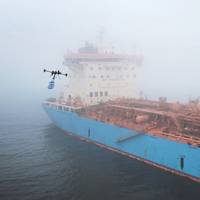
Unmanned aerial systems (UAS), or “drones” in common parlance, are not a part of the historical maritime vocabulary. At least not yet. While the term “drones” may conjure images from science fiction, the reality is that companies are designing commercial UAS for the private sector, and they are gradually permeating our daily life. Henry Ford is rumored to have opined on his invention of the automobile that if he had asked people what they wanted, they would have said “faster horses.” In the case of UAS…
From Whales to Silver Foxes to Refugees: EMILY Robot is A Lifesaver
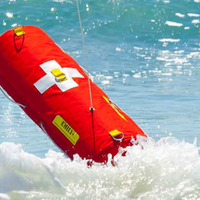
She’s tough—capable of punching through 30-foot waves and riptides or smashing into rocks and reefs. But she’s also tender, providing hope to those in peril. Meet EMILY the robotic lifeguard—officially known as the Emergency Integrated Lifesaving Lanyard—a remote-controlled buoy that recently was used to rescue nearly 300 Syrian migrants from drowning in the waters off the Greek island of Lesbos. Created with support from the Office of Naval Research (ONR), several EMILY devices…
Driving Innovation: the Unmanned FLNG
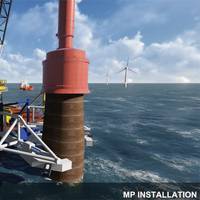
DNV GL developed a new unmanned floating LNG concept that it claims overcomes many of the challenges faced by operators looking to unlock the potential of remote offshore gas fields. Called Solitude, DNV GL said the concept demonstrates how technological advances can be combined into a solution that offers an estimated 20% reduction in annual OPEX, only adding a few percent increase in CAPEX and at the same time increasing overall safety. Foreseeing the need for more remote projects to be able to overcome even more challenging cost barriers…
Unmanned Systems Work Together from Single Controller
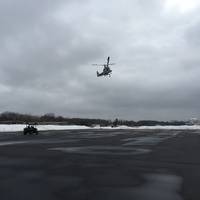
A flight demonstration using a hand-held tablet has shown how unmanned air and ground vehicles can be supervised together by a single operator, and how big and small businesses can work together. The demonstration was conducted on March 26, 2014, at Kaman Aerospace in Bloomfield, Conn., involving a Kaman K-MAX helicopter equipped with Lockheed Martin’s mission management system operating in the unmanned mode, and a Neya Systems UxInterceptor unmanned all-terrain vehicle. During the medical casualty response and resupply scenario…
Tuco Debuts New Wind Farm Service Boat
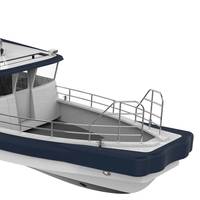
Less than a week before the Offshore Energy 2014 Exhibition and Conference in Amsterdam the coming week, Tuco Marine disclosed the newest vessel in the ProZero series of Fast Rescue Boats, Daughter Crafts and Workboats; The New ProZero 11m Wind Farm Service Boat. The new design, a dedicated service boat and crew transfer vessel for offshore wind farms, has been developed as a little sister to the ProZero 13m Wind Farm Service Boat presented earlier this autumn. The 11m meter vessel…
Video: Tuco Marine Debuts Wind Farm Service Boat
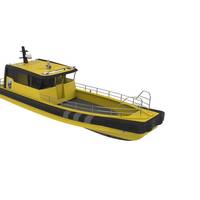
Tuco Marine Group of Denmark discloses the newest vessel in the ProZero series of Fast Rescue Boats, Daughter Crafts and Workboats; The New 13m WIND FARM SERVICE BOAT. The new design is a dedicated service boat and crew transfer vessel for offshore wind farms. The boat has been developed in close collaboration with Norwegian operators and experts in Wind Farm Services. A video presentation of the new vessel design is available here. The 13m meter vessel is constructed to be lifted…
Navy Gathers Tech Innovators to Share Ideas, Find Partners
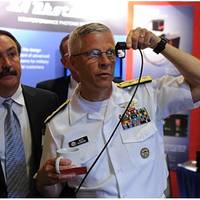
The 2014 Navy Opportunity Forum paired small businesses and researchers with potential partners, funding sources, acquisition professionals and resource sponsors. Companies—small businesses in particular— were able to present their new materials, processes and manufacturing techniques to prime contractors and Navy and Marine Corps program managers. The focus of the event was the Department of the Navy’s Small Business Innovation Research (SBIR) program. It also touched on related programs designed to help small business contribute to the nation’s defense…
US Military Program Targets Transitioning Technologies
The U.S. Department of Defense (DoD) issued a Broad Agency Announcement (BAA) on May 28, 2014 seeking proposals under the Rapid Innovation Fund (RIF) program to transition innovative technologies that resolve operational challenges or save costs into existing acquisition programs. The RIF Program is a Congressionally-mandated program, currently authorized from FY11 – FY15 and managed by the Office of the Secretary of Defense (OSD). RIF facilitates innovative technologies that show a clear transition path to fielding the technology into existing defense acquisition programs. There is a two-step selection process. The BAA will list the technology areas of interest for each participating component, instructions for submission of white papers, and source selection criteria.
NSWC Carderock Receives Patent for Galfenol Discovery, Development
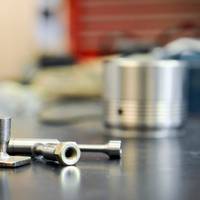
Naval Surface Warfare Center (NSWC) Carderock received a patent Nov. 13 for their discovery and development of a new smart material called Galfenol. Galfenol is a magnetostrictive smart material that can be used in sensors, actuators and structural supports. The material was co-discovered in 1999 by NSWC Carderock and the Department of Energy's Ames Laboratory and has been in development for the past 13 years in partnership with Etrema Products Inc. "By itself, iron has the characteristics to be considered a magnetostrictive material…
US Navy AwardsOcean Wave Power Contract to Bodkin
Bodkin Design & Engineering (BD&E) contracted to develop a coastal water prototype wave power harvesting system. A prototype unit was constructed and tested at the company's Newton facility and was found to have a power conversion efficiency between 34% and 50%. This covert system is designed to be alternative power source for submerged sensors and systems. In addition to its military uses, this submerged system can find application to commercial moorings and on pleasure boats. The fully submerged, robust, self-contained design is anti-fouling and ideally suited for surf zone operation where extreme environmental conditions could damage systems that rely on deployed arms, floats or fragile mechanics.
US Navy Radar Jamming Contract for KOR Electronics
Mercury Computer Systems' subsidiary KOR Electronics gets a US Navy 5-year basic sole source orderiing agreement (BOA). This BOA supports the continued development of state-of-the-art techniques and target generation capabilities in conjunction with the advanced Digital RF Memory (DRFM) architecture developed under a prior Small Business Innovation Research (SBIR) Phase II.5 award issued to KOR Electronics. The BOA provides for research and development, production, engineering services and ongoing support and is valued at up to $58M. "This agreement is a perfect example of how the SBIR program can benefit our country's defense and small business," said Kevin Carnino, KOR Electronics President and Chief Executive Officer.
Art Anderson Associates Names New Vice Presidents

Art Anderson Associates, a Bremerton-based multidisciplinary engineering services firm, has named Ralph E. Duncan, PE as Vice-President of Marine and Sean M. Hoynes, PE as Vice-President of Facilities. Each will be responsible for customer relationship management, program management, resource planning and allocation, contract compliance, quality assurance, personnel supervision, marketing, sales and strategy. The promotions reflect a crystallization of the firm’s Marine and Facilities market sectors and position the company for sustained growth in the new economy. Mr.
New Counter-Mine Technology for Ships
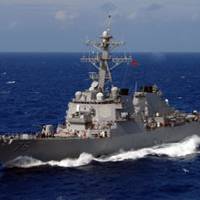
Using a high-temperature technology developed by the Office of Naval Research, the U.S. Navy has successfully launched a new counter-mine tool to protect its fleet at sea. In a time of increasing irregular warfare threats, the Navy has devised and successfully demonstrated a revolutionary technology to help reduce the risk of naval mine strikes to U.S. Navy ships. Installed aboard the USS Higgins (DDG 76) in July 2008, the prototype degaussing coil counters underwater mines utilizing superconducting ceramic materials…
U.S. DOT Seeks Proposals to Address Challenges
The U.S. Department of Transportation’s (U.S. DOT) Research and Innovative Technology Administration (RITA) announced the first of two Small Business Innovation Research (SBIR) program solicitations for 2009. Through this competitive program, the Department encourages the nation's small, high-tech, innovative businesses to be a significant part of the federal government's research and development efforts. Small businesses are invited to submit innovative research proposals that address high priority national transportation goals during the solicitation period, which runs from Feb. 13 through April 15. The SBIR program is administered by RITA’s Volpe National Transportation Systems Center on behalf of the U.S. DOT’s Office of Small and Disadvantaged Business Utilization.
Improved Marine Mammal Transport Vessel Studied
Art Anderson Associates reported that it has completed Phase I of the Small Business Innovation Research (SBIR) contract to evaluate the Stolkraft hull form as an alternative to the Navy’s 11-meter Rigid Inflatable Boat (RIB) in the transportation of marine mammals. This SBIR topic was issued to address the excessive slamming loads being experienced by Navy Special Clearance Team (NSCT-1) forces on their current 11-meter RIB. In Phase I, Art Anderson Associates reports, tests of an existing Stolkraft showed that it experienced lower vertical accelerations than the U.S. Navy 10-m RIB under similar test conditions. A concept design was also produced based on the NSCT-1 operational requirements established during the Phase I kick-off meeting.
Maritime Applied Physics Awarded Concept Design Contract
Maritime Applied Physics Corporation has been awarded a U.S. Navy contract for a concept design study of a 2,200-ton prototype minesweeper. The contract is under sponsorship of Naval Sea Systems Command's Small Business Innovation Research Program. The craft will incorporate the company's proprietary Hydrofoil Small Waterplane Area Ship (HYSWAS) technology that has been developed jointly with the Naval Surface Warfare Center. As designed, it will be capable of sustained high-speed, trans-oceanic self deployment. Payloads will include a wide array of newly emerging autonomous and semi-autonomous mission systems that can be rapidly deployed from the vessel while on station.
Nanotechnology: The Next Frontier for Maritime Security?
Over 20 million shipping containers enter the U.S. each year, most onboard ships. These containers are the life blood of a national economy fed by an industry that depends upon the just-in-time delivery of goods and supplies rather than maintaining expensive inventories. Any actions that slow the flow of these containers will have a significant economic impact. Yet containers are very affordable, Council on Foreign Affairs’ Dr. Stephen Flynn noted in his book “America the Vulnerable” (Harper Collins), “The challenge of securing the loading and movement of containers is formidable. Anyone who has $3,000 to $5,000 can lease one of the many millions of containers that circulate around the globe.
M Ship Co. Announces Navy Contract
M Ship Co recently announced the U.S. Navy's Office of Naval Research has awarded the firm a $750,000 contract, including options, to validate the potential of the innovative M-hull technology. The Navy Small Business Innovation Research (SBIR) contract calls for tank testing and sea trials for the M-hull technology, and the development of computational fluid dynamics (CFD) tools for quantifying the hull's performance. Earlier this month, M Ship Co. delivered the M 80 Stiletto, an 88-foot vessel that uses the patented M-hull technology. M Ship Co. built the M 80 Stiletto for the Pentagon's Office of Force Transformation (OFT) as part of the OFT's Wolf PAC Distributed Operations Experiment, conducted in association with USSOCOM.
Navy UUV Program, Small Businesses Develop Energy Technology
In a partnership that will benefit both the government and commercial enterprise, the U.S. Navy’s Unmanned Undersea Vehicles (UUV) Program Office (PMS 403), small businesses and the NAVSEA Undersea Warfare Center are developing safer, more efficient energy sources for UUVs. “Our efforts promise to pay dividends not only for the [military] user community, which will end up with safer products for use aboard fleet platforms, but for small business as well, which has an opportunity to expand a market and make a key contribution to our mission,” said Capt. Paul Ims, UUV program manager. PMS 403 is responsible for developing UUV platforms and payload technologies to meet a broad spectrum of mission requirements.





